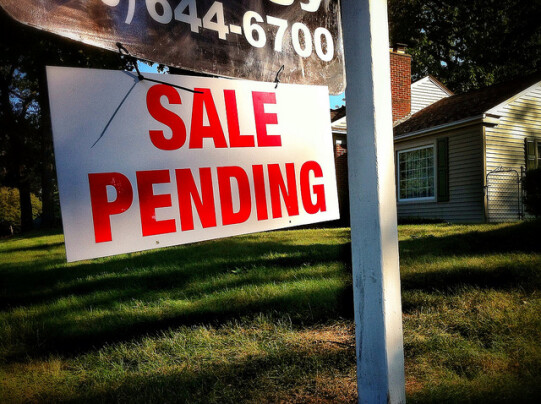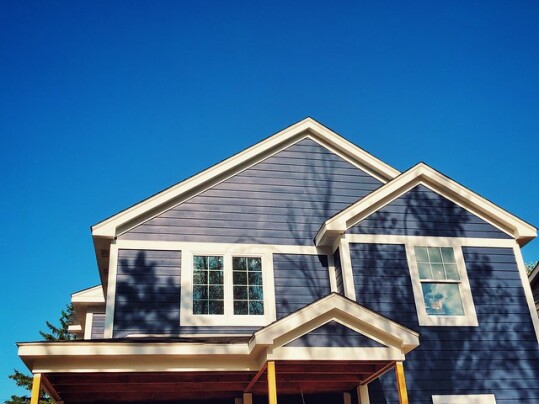The number of contracts to buy homes rebounded in March, according to new numbers from the National Association of Realtors. Their Pending Home Sales Index – which measures signings, not closings – saw a 1.9 percent increase from the month before. It was the first improvement following two consecutive months of declines. Lawrence Yun, NAR’s chief economist, says demand from buyers is high and will likely remain high. “The increase in pending sales transactions for the month of March is indicative of high housing demand,” Yun said. “With mortgage rates still very close to record lows and a solid job recovery underway, demand will likely remain high.” Yun also believes the low supply of homes for sale will begin to recover in the coming months as more new homes are built. “Although these moves won’t immediately replenish low supply, they will be a step forward,” he said. Regionally, the South, West, and Northeast all saw month-over-month gains. The Midwest was the only region that slowed from the previous month. (source)
Archive for April 2021
Mortgage Rates Continue To Fall
According to the Mortgage Bankers Association’s Weekly Applications Survey, average mortgage rates fell again last week. Rates were down across all loan categories, including 30-year fixed-rate loans with both conforming and jumbo balances, loans backed by the Federal Housing Administration, and 15-year fixed-rate loans. The drop marks the third consecutive week rates have fallen. Joel Kan, MBA’s associate vice president of economic and industry forecasting, says declining rates didn’t keep demand for mortgage applications from decreasing. “Mortgage applications decreased last week, even as mortgage rates dropped for the third week in a row,” Kan said. “The purchase market’s recent slide comes despite a strengthening economy and labor market. Activity is still above year-ago levels, but accelerating home-price growth and low inventory has led to a decline in purchase applications in four of the last five weeks.” Last week, demand for loans to buy homes was down 5 percent from one week earlier. It was 34 percent higher than the same week one year ago. (source)
Urban Neighborhoods Gaining Buyer Interest
Many home buyers used the coronavirus as an excuse to get away from it all. After the pandemic’s initial onset, interest in small towns and rural areas spiked, as more Americans looked to move somewhere where they could have more space for the same money. The increased interest in suburbs and exurbs pushed price growth in those areas and soon their prices were outpacing urban neighborhoods. But while the trend continued through the end of 2020, the beginning of this year brought a change. Home buyers were, once again, looking to buy in bigger cities. Now, according to one recent analysis, urban single-family homes are showing price increases of almost 20 percent year-over-year. They’re also getting more pageviews online. And, in both cases, they’re outpacing properties in the small towns and rural areas that boomed last year at this time. The newfound interest in urban neighborhoods seems to stem from increasing optimism about the coronavirus vaccines and rebounding economy. But while buyers are looking at properties in the city, they haven’t let go of their need for more space. In fact, single-family homes have been selling faster than condos – not just in cities, but in neighborhoods of all types. (source)
Housing Market Still Faces Some Pandemic Risk
The coronavirus couldn’t stop a hot market in 2020. After a brief pause, home buyers returned and sales bounced back. But while the housing market was an economic bright spot last year – and vaccinations provide hope that the pandemic’s worst days are behind us – there’s still some risk. That’s why ATTOM Data Solutions’ first-quarter 2021 Special Coronavirus Report looked at which markets were most vulnerable among 552 counties across the country. The report analyzed each county – specifically looking at the percentage of homes facing possible foreclosure, the portion with mortgage balances exceeding the estimated property value, and the percentage of average wages required to pay for homeownership expenses. Todd Teta, ATTOM’s chief product officer says there were some areas that showed more vulnerability than others. “Clearly the housing market continues to surge, and things are looking up, more and more, for the U.S. economy in 2021 …” Teta said. “Our analysis suggests that even as the market remains hot, pockets of the East Coast, Midwest, and South are at higher risk from potential damage connected to the pandemic.” The counties seen as vulnerable included areas in New Jersey, Illinois, Connecticut, North Carolina, and Florida. (source)
Booming New Home Market Sees Sales Surge
Today’s market is a seller’s market. But despite the best conditions in years, fewer homeowners are listing their homes for sale. That’s led to a lower-than-normal number of existing homes available on the market. It’s also led to surging new home sales. In fact, according to new numbers from the U.S. Census Bureau and the Department of Housing and Urban Development, March saw a 20.7 percent increase over the previous month. That far exceeded economists’ expectations and pushed sales almost 67 percent higher than last year – when the coronavirus had buyers temporarily sidelined. It’s encouraging news, especially when combined with recent data showing both building permits and housing starts up from the month before. The new home market is booming and, if builders can keep up with demand, it should help relieve upward pressure on home prices. It should also give current homeowners more options and some motivation to sell. (source)
Homes Sell Faster Than Ever In March
The typical home sold in March was on the market for just 18 days, according to the National Association of Realtors’ most recent existing-home sales report. That’s down from 29 days last year at the same time. It’s also a record low. Lawrence Yun, NAR’s chief economist, says buyers remain active despite the market’s fast pace this spring. “Consumers are facing much higher home prices, rising mortgage rates, and falling affordability, however, buyers are still actively in the market,” Yun said. “The sales for March would have been measurably higher, had there been more inventory. Days-on-market are swift, multiple offers are prevalent, and buyer confidence is rising.” There are several reasons home buyers remain active in the market, despite those challenges. Among them, an improved job market, still favorable mortgage rates, and the coronavirus vaccine lead the list. Buyers feel more optimistic about the economy and the pandemic and it’s leading to strong demand for homes. If new home construction can keep up with demand and help hold home-price increases down, sales will only move higher as we head into summer. (source)
Mortgage Rates Fall To Two-Month Low
According to the Mortgage Bankers Association’s Weekly Applications Survey, average mortgage rates fell to their lowest point in two months last week. Rates were down across all loan categories, including 30-year fixed-rate loans with both conforming and jumbo balances, loans backed by the Federal Housing Administration, and 15-year fixed-rate loans. The decline helped boost overall mortgage demand, which rose 8.6 percent from one week earlier. Joel Kan, MBA’s associate vice president of economic and industry forecasting, said demand for loans to buy homes looks strong. “The spring housing market also saw a boost from lower rates, with purchase applications – driven by a jump in conventional applications – increasing over 5 percent,” Kan said. “MBA expects the purchase market to remain strong, with the recovering job market and supportive demographics fueling housing demand in the months ahead.” The MBA’s weekly survey has been conducted since 1990 and cover 75 percent of all retail residential mortgage applications. (source)







